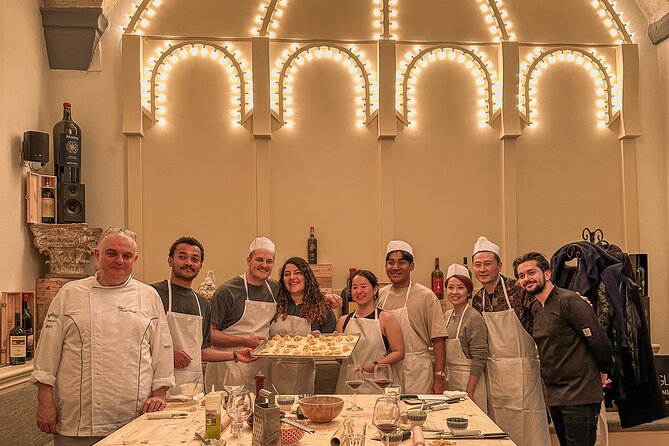Filippo Brunelleschi’s architectural innovations transformed the Renaissance landscape, leaving an indelible mark on the world of design. From his groundbreaking techniques in linear perspective to his engineering masterpiece – the iconic dome of the Florence Cathedral – Brunelleschi’s visionary approach revolutionized the field. But his influence extended far beyond just the structural marvels; his humanistic ideals prioritized the human experience, creating a sense of community and harmony through his meticulously crafted spaces. Curious to discover more about this architectural pioneer and the principles that guided his revolutionary work? Let’s dive in.
Key Points

- Brunelleschi revolutionized architecture by introducing mathematical principles, linear perspective, and innovative structural techniques, exemplified in the iconic Dome of the Florence Cathedral.
- Brunelleschi’s architectural designs prioritized functionality, aesthetics, and the human experience, fostering a sense of community and appreciation for the built environment.
- Brunelleschi’s mastery of proportion, symmetry, and classical elements defined the Renaissance architectural style, inspiring countless designers and architects.
- The Dome of the Florence Cathedral showcased Brunelleschi’s engineering prowess, standing as an enduring testament to his innovative construction techniques and visionary approach.
- Brunelleschi’s architectural philosophy centered on the harmonious integration of classical elements, with the human form and its proportions as the foundation for his designs.
Brunelleschi’s Architectural Innovations

Filippo Brunelleschi, the renowned Renaissance architect, revolutionized the field of architecture with his groundbreaking innovations.
He’s credited with introducing the use of mathematical principles and linear perspective in building design, a stark contrast to the Gothic style that dominated the era. Brunelleschi’s innovative techniques allowed for greater structural integrity and visual harmony.
His pioneering work on the dome of the Florence Cathedral, the largest masonry dome ever constructed, showcased his engineering prowess.
You can also read our reviews of more tours and experiences in Florence.
Dome of the Florence Cathedral
The dome of the Florence Cathedral, widely regarded as Brunelleschi’s crowning achievement, has captivated architects and visitors alike for centuries.
Towering over the city’s skyline, this engineering marvel showcases his unparalleled ingenuity and technical prowess, setting a new standard for ambitious architectural feats during the Renaissance.
Brunelleschi’s revolutionary design, which defied conventional wisdom at the time, features a nested double-shell structure that’s both visually stunning and structurally sound.
By developing innovative construction techniques, including the use of a unique herringbone pattern of brickwork, he was able to build the massive dome without the aid of a traditional supporting framework.
The result is a testament to human creativity and the power of innovative thinking.
Humanistic Architectural Principles

Throughout his architectural pursuits, Brunelleschi embodied a humanistic approach that prioritized functionality, aesthetics, and the human experience. He recognized the importance of designing buildings that not only stood the test of time but also uplifted and inspired the people who interacted with them on a daily basis.
Brunelleschi’s humanistic principles were evident in his work:
- He focused on creating structures that were visually stunning, with clean lines and symmetrical proportions that appealed to the human eye.
- His designs were tailored to meet the practical needs of the occupants, ensuring that spaces were comfortable, accessible, and optimized for their intended use.
Brunelleschi’s buildings were designed to foster a sense of community and human connection, encouraging social interaction and fostering a deeper appreciation for the built environment.
Perspective and Spatial Harmony

Alongside his humanistic approach, Brunelleschi’s revolutionary use of perspective and spatial harmony defined his architectural genius. He masterfully blended mathematical precision with artistic vision, creating buildings that captivated the senses and challenged conventional perceptions of space. Through meticulous planning and innovative techniques, Brunelleschi sculpted interiors that felt both expansive and intimate, guiding the eye and drawing the viewer deeper into his masterful designs.
| Perspective | Spatial Harmony |
|---|---|
| – Mathematical precision | – Blending of form and function |
| – Vanishing point and foreshortening | – Harmonious proportions |
| – Illusion of depth and volume | – Unified aesthetic experience |
This harmonious interplay of perspective and spatial harmony elevated Brunelleschi’s work, establishing him as a true pioneer of the Renaissance architectural tradition.
Influential Works and Projects

Brunelleschi’s most influential works and projects truly showcase his innovative architectural vision and technical prowess. His groundbreaking design for the iconic Duomo in Florence remains one of the premier examples of his genius, as he masterfully blended engineering feats with artistic flair to create a structure that has captivated the world for centuries.
Beyond the Duomo, Brunelleschi’s impact can be seen in:
- The Basilica of San Lorenzo, which he designed with a revolutionary plan that integrated the structure with its surroundings
- The Ospedale degli Innocenti, a foundling hospital renowned for its elegant portico and harmonious proportions
- The Pazzi Chapel, a small jewel-box of a building that exemplifies Brunelleschi’s mastery of spatial harmony and classical style
- Florence Sunset Walking Tour With Wine & Food Tasting
- Florence Walking Tour With Skip-The-Line to Accademia & Michelangelo’S ‘David’
- Florence Electric Golf Cart Tour
- The Dark Side of Florence – Mysteries and Legends
- Tuscany Bike Tours Through the Chianti Hills With Wine Tasting
- Florence Cooking Class: Learn How to Make Gelato and Pizza
Contributions to Renaissance Architecture

Brunelleschi’s innovative architectural ideas and techniques paved the way for the development of Renaissance architecture, revolutionizing the field and inspiring generations of builders to come. His groundbreaking work on the Basilica of San Lorenzo and the Basilica of Santo Spirito in Florence showcased his mastery of proportion, perspective, and engineering. Brunelleschi’s use of the classical orders, his innovative domes, and his focus on symmetry and balance became hallmarks of the Renaissance style.
| Brunelleschi’s Contributions | Impact |
|---|---|
| Innovative domes | Inspired later architects |
| Mastery of proportion and perspective | Revolutionized architectural design |
| Classical orders and symmetry | Defined the Renaissance style |
Brunelleschi’s architectural genius left an indelible mark on the Renaissance, paving the way for a new era of beauty, innovation, and enduring influence.
Architectural Legacy and Impact

His architectural innovations and pioneering techniques lived on, fundamentally shaping the direction of Renaissance architecture for generations to come.
Brunelleschi’s groundbreaking work left an indelible mark that can still be seen and felt today:
- The iconic dome of Florence’s Duomo remains a testament to his engineering prowess, influencing the architectural landscape of Italy and beyond.
- His pioneering use of perspective and classical elements set new standards, inspiring countless designers to follow in his footsteps.
Brunelleschi’s architectural legacy continues to fascinate and inspire scholars, artists, and enthusiasts alike, solidifying his place as a true visionary of the Renaissance era.
Brunelleschi’s Architectural Philosophy

Typically, Brunelleschi’s architectural philosophy centered on a meticulous attention to proportion, symmetry, and the harmonious integration of classical elements.
He drew inspiration from the grandeur and order of ancient Roman architecture, seeking to revive these principles in his own innovative designs.
Brunelleschi believed that the human form and its proportions should serve as the foundation for architectural composition, and he meticulously studied the geometric relationships that define the ideal human body.
This obsession with proportion and symmetry is evident in his groundbreaking work, like the Basilica of San Lorenzo, where he masterfully blended classical elements to create a harmonious, visually striking structure.
Brunelleschi’s philosophy shaped the course of Renaissance architecture, paving the way for a new era of architectural excellence.
Frequently Asked Questions
Can I Take a Pasta Cooking Class in the Medieval Tower?
Yes, you can take a pasta cooking class in a medieval tower from the 1200s in Florence, Italy. The class includes making fresh pasta and sauces, pairing with Tuscan wine, and a delicious lunch in this unique historical setting.
Is the Pasta Cooking Class Wheelchair and Stroller Accessible?
This pasta cooking class in a medieval tower is wheelchair and stroller accessible. It’s got all the details covered – private transportation, infant seats, and wheelchair-friendly surfaces. So everyone can enjoy learning to make authentic Italian pasta from scratch.
What Type of Tuscan Wine Is Included in the Pasta Class?
The pasta class includes unlimited Tuscan wine, so you can sample the rich, full-bodied flavors that pair perfectly with the homemade pasta dishes you’ll learn to prepare. It’s a great way to experience authentic Italian cuisine and wines.
Is There a Maximum Number of Travelers for the Pasta Class?
The pasta class has a maximum of 15 travelers. According to the details, the class size is limited to ensure a more intimate and personalized experience for guests. So you’ll get plenty of hands-on attention from the professional chef.
Where Is the Pickup and Drop-Off Location for the Pasta Class?
The pasta class has a pick-up and drop-off location at Via Matteo Palmieri, 31 R, 50122 Firenze FI, Italy. This is the same meeting point where the class starts and ends.
Recap
Brunelleschi’s architectural brilliance transformed the field, establishing new standards of mathematical precision, visual perspective, and structural integrity.
His iconic Florence Cathedral dome showcased his engineering prowess and humanistic values, prioritizing functionality, aesthetics, and the human experience.
Brunelleschi’s mastery of proportion, symmetry, and classical elements defined Renaissance architecture, inspiring countless designers and solidifying his legacy as a true visionary who left an indelible mark on the built environment.
More Tour Reviews in Florence
Not for you? Here's more things to do in Florence we have recnetly reviewed
- Half-Day Tour from Florence: Chianti Colors & Flavors
- WONDERFUL TUSCANY: Siena, San Gimignano & Chianti Wine Tour
- Tuscany: Siena, San Gimignano and Chianti Wine Tour
- Historic Markets Food Tour and Cooking Class
- Michelangelo and Santa Croce Private Tour
- Florence: Custom Jewelry Making Experience
- Florence Sunset Tour: Silent Disco & Aperol Spritz
- Uffizi gallery: private guided tour priority ticket
- Siena Half-Day Tour from Florence
- The Tuscan Jewels: Private Full-Day Tour From Florence
- Small-Group Uffizi Museum and Leonardo Da Vinci Highlights
- Tuscany Florence day trip with Vinery Lunch from Rome
